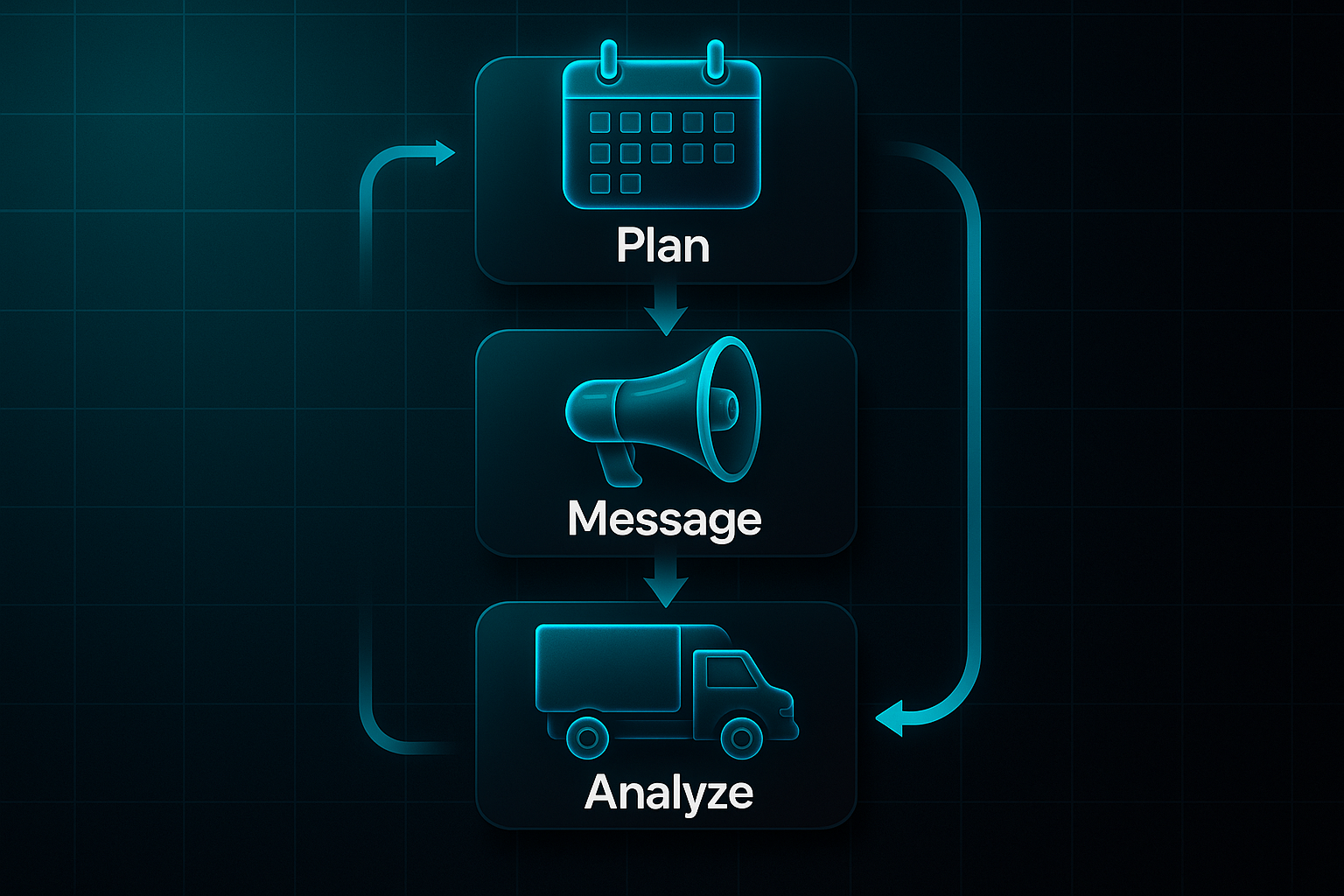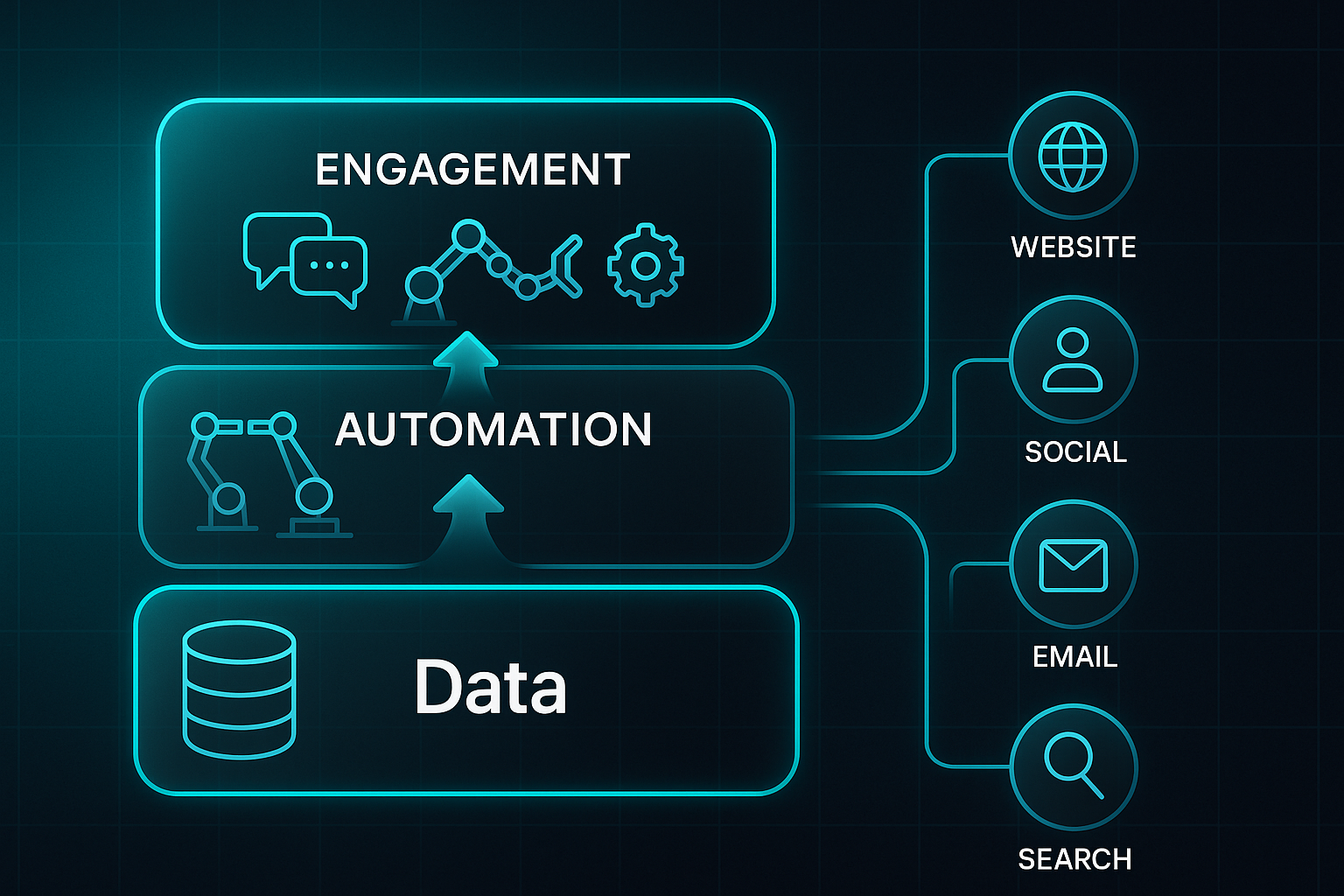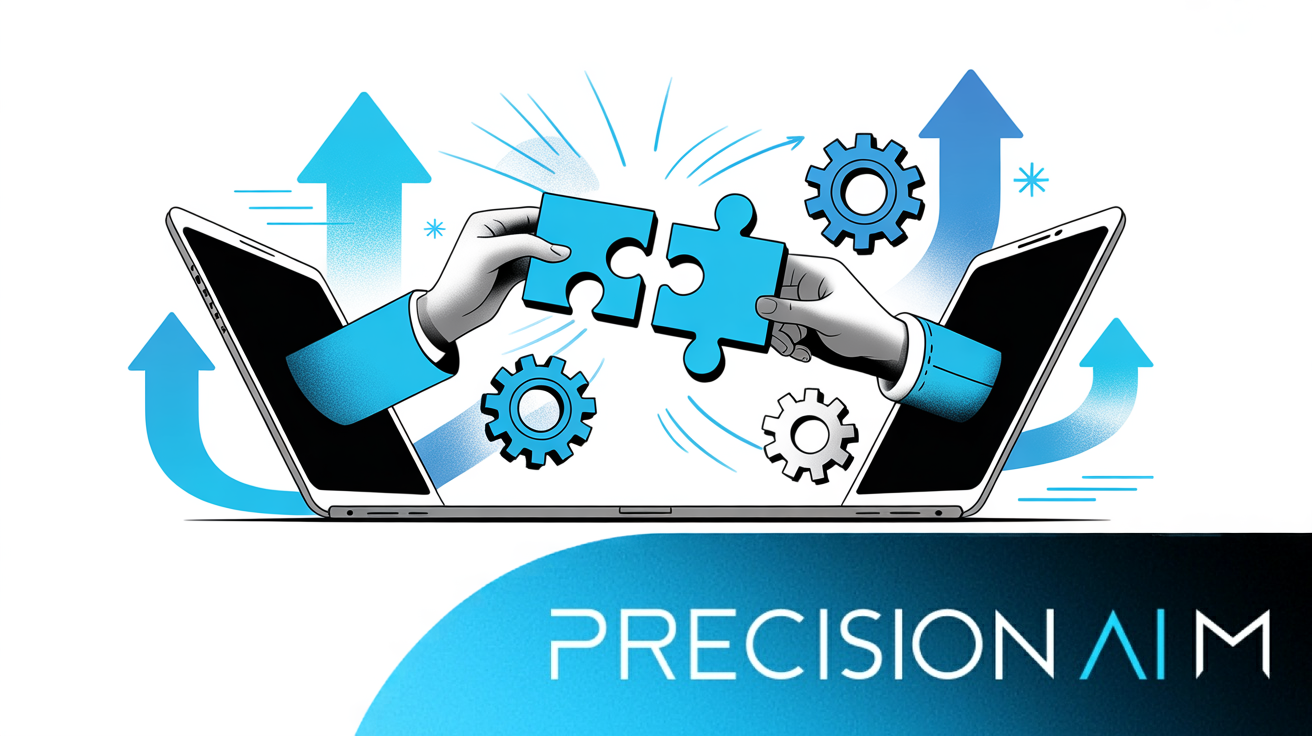Digital marketing technologies have exploded in both number and complexity, leaving many teams unsure where to start or what actually matters. I’ve seen organisations struggle to pick the right tools, only to end up with bloated stacks and wasted budgets.
In this guide, I’ll break down what digital marketing technologies really are, why they’re different from generic business software, and how to distinguish the platforms that drive measurable results. You’ll get a clear overview of core categories—SEO, content, email, analytics, social, personalisation, and customer data platforms—with practical examples and onboarding tips for each.
I’ll also share frameworks for building resilient, integrated tech stacks, including selection criteria, piloting strategies, and validation checkpoints. You’ll see how leading teams avoid common pitfalls, keep campaigns agile, and maintain compliance as regulations shift.
Finally, I’ll walk through real-world case studies showing how agencies, brands, and SaaS companies use these technologies for growth. By the end, you’ll have actionable tactics for choosing, integrating, and troubleshooting digital marketing tools—so your campaigns stay sharp and your results keep improving.
What are digital marketing technologies?
Understanding Digital Marketing Technologies
Digital marketing technologies are the software, platforms, and systems built to plan, run, and improve online marketing campaigns. They're the driving force behind how organisations interact with audiences across search engines, social media, email, and websites.
Unlike typical business tools, digital marketing technologies focus on measurable marketing activities. They help with campaign planning, targeted messaging, content delivery, and real-time performance analysis, so teams can make smart decisions and tweak campaigns as new data comes in.
These solutions orchestrate marketing efforts—segmentation, personalisation, analysis—and make it possible to optimise budgets and elevate customer experiences.

Why Distinguishing Digital Marketing Technologies Matters
It’s tempting to lump digital marketing tech in with broader business software. But clarity here really counts. When teams focus on genuine marketing technologies, they build rational tech stacks, target spending, and avoid getting lost in platforms that don’t support their goals.
This sharpness means tighter integration, clearer reporting, and the flexibility to shift as digital marketing evolves. As choices grow, knowing what fits makes all the difference.
Core Components and Categories of Digital Marketing Technologies
You’ll find digital marketing solutions grouped into key categories. Here are some you’ll encounter most often:
- SEO Platforms
Improve site visibility and search rankings with research and optimisation tools. - Content Marketing Tools
Oversee creation, distribution, and performance tracking for digital content. - Email Automation
Assist with scheduling, segmentation, and personalised campaign delivery. - Analytics Solutions
Reveal campaign performance, user behaviour, and conversion patterns. - Social Media Management
Support publishing, scheduling, and multi-channel engagement. - Personalisation Platforms
Deliver customised experiences based on user interactions and preferences. - Customer Data Platforms (CDPs)
Gather and activate data for targeted marketing.
The unifying thread? Every tool serves a clear marketing purpose. Those focused on internal operations or basic IT aren’t part of this exclusive group.
Conceptual Models and Frameworks for Understanding the Martech Landscape
The “martech stack” is a simple but powerful way to visualise digital marketing technologies. Picture it as a layered system: you start with foundational data and analytics, and build up to specialised automation and engagement tools.
Today’s stacks favour integration. Central data platforms connect with agile apps, enabling a joined-up approach to omnichannel marketing. Another framework—customer journey mapping—matches technology choices to specific audience touchpoints, from initial contact to conversion.

Evolution and Scale of Digital Marketing Technologies
Here’s something that might surprise you: in 2024, there are more than 15,000 digital marketing tools worldwide. Expanding trends like AI-driven software, cloud platforms, and seamless channel integration mean marketers can launch campaigns faster, target more precisely, and spend less time on routine tasks.
The global marketing technology market is experiencing exponential growth, expanding from $400.86 billion in 2023 to an estimated $473.71 billion in 2024, representing a compound annual growth rate (CAGR) of 18.2%.
Common Challenges and Misconceptions
Complexity and Silos
Teams often face issues with overlapping features or isolated data, leaving everyone to deal with fragmented systems and complicated execution.
Misconceptions and Pitfalls
Some organisations mislabel generic tools as marketing platforms, or invest before linking purchases to marketing outcomes. The big mistake? Acquiring too many tools without strategic focus.
Next, we’ll take a closer look at each category, exploring leading platforms, standout features, and how today’s marketing teams navigate this ever-changing landscape.
Major Categories and Leading Digital Marketing Technology Platforms
Mapping the Digital Marketing Technology Landscape by Function
Let’s break down how digital marketing technologies fall into distinct buckets. The core categories include SEO platforms, content and AI tools, email marketing, marketing automation, and big multi-channel solutions covering PPC (pay-per-click), social, personalisation, and Customer Data Platforms (CDPs).

New teams need simplicity from their tools, while established groups might crave more power and integration. The trick is picking platforms that actually match your workflow and experience level.
SEO Platforms: Driving Organic Growth and Visibility
SEO platforms are foundational for boosting online visibility and organic reach. Semrush is popular for agencies needing deep analytics across complex sites. Ahrefs excels with keyword and backlink work. SEOSwarm (our solution) handles fully managed, AI-powered SEO for hands-off teams. Google Search Console and Ubersuggest are safe bets for straightforward diagnostics.
| Platform | Onboarding Time | Integration Level | Best Use Case | Frequent Error |
|---|---|---|---|---|
| Semrush | 2–4 hours | Extensive | Agencies, complex sites | Skipping platform updates |
| Ahrefs | 1–2 hours | Moderate | Technical SEO, backlink analytics | Under-utilising reports |
| SEOSwarm | 2–3 hours | High | Managed, scalable SEO | Ignoring automation reviews |
| Google Search Console | ~45 mins | Basic | Owners, diagnostics | Missing variant checks |
| Ubersuggest | ~1 hour | Basic | SMBs/startups, competitor reviews | Relying on summary metrics |
Semrush suits teams wanting robust reporting and multi-domain coverage. Technical campaigns lean towards Ahrefs. SEOSwarm is perfect for reducing manual work, with streamlined automation and AI reviews. On tighter budgets, Google Search Console and Ubersuggest answer routine diagnostics.

Weekly dashboard monitoring and monthly audits—tracking rankings, traffic, and conversions—help maintain SEO health. Problems like poor mobile optimisation or data disconnects pop up often; troubleshooting usually starts with Google Search Console.

AI-Powered
SEO Content Strategy
See the AI platform that's replacing entire content teams
(with better results).

Content Marketing and AI Tools: Creating, Scaling, and Optimising
Now, let’s talk content. Choices are shaped by team size and creative goals. Jasper AI leads for automated writing, Canva gives a boost to visuals, and Surfer SEO delivers live optimisation.
Jasper and Canva get you going instantly, while Surfer SEO takes a few hours to integrate well. Larger teams can mix AI-generated drafts with human reviews for best results. Smaller setups thrive with Canva and Surfer’s simplicity.
To hold standards, schedule monthly audits and tie in analytics tracking. If AI isn’t meeting expectations, switch to manual review until quality is restored.
Hybrid approaches—where people and AI work together—drive measurable results. Engagement frequently jumps by 18–40% when you adopt this workflow.
Email Marketing Platforms: Automating, Personalising, and Scaling Campaigns
For email, think about list size, compliance needs (GDPR/CCPA included), and integration. Mailchimp is flexible and onboarded super quickly. Klaviyo is built for ecommerce automation, and Constant Contact keeps things simple for events.
Mailchimp or Constant Contact? You’ll be sending emails straight away. Klaviyo involves a deeper setup, but supports complex triggers.
Regular list cleaning and deliverability audits are crucial. Quarterly compliance checks help avoid legal headaches, and mobile optimisation ensures your messages actually get read. If open rates drop or warnings appear, revert to plain-text emails for a faster recovery.
Success means seeing 18–23% open rates, 2–4% click-through, and up to 21% ROI lift with mobile-centric campaigns.
Marketing Automation Platforms: Orchestrating Multi-Channel Engagement
Automation platforms bridge CRM, workflow automation and lead segmentation. HubSpot is ideal for small businesses needing fast setup. ActiveCampaign’s quick integration benefits many teams, while Marketo supports complex, enterprise projects.
Keep your data connected and monitor conversion rates. If error rates grow—perhaps integrations break—scale automation back temporarily or handle tasks manually until you solve underlying issues.
PPC, Analytics, Social, Personalisation & CDP Platforms: Extending Reach and Intelligence
Platforms such as Landingi and Albert.ai handle PPC, GA4 and FullStory deliver analytics, Hootsuite supports social, Customer.io manages personalised targeting, and Segment covers CDP needs.
Launching is often simple, thanks to templates and automation features. Early audits, anomaly checks, and ongoing metric tracking (like ROAS, engagement and ticket reduction) keep campaigns effective and issues contained.
Should disruptions—tool outages or buggy reports—crop up, lean on manual reporting and scheduled checks to keep things moving.
How to Use This Map
Select the technology mix that suits your size and current priorities. Routine setup, regular audits, and fallback plans for failed automation (manual process or lighter routines) keep campaigns resilient.
Consistent validation is the secret to keeping your marketing sharp, nimble, and error-free.
Next, you’ll see the latest innovations shaking up digital marketing tech—from AI-driven upgrades to hybrid platforms and omnichannel strategies built for 2025 and beyond.
Latest Innovations and Trends in Digital Marketing Technologies
Charting the Frontier: Why Staying Current Matters
With the big categories and platforms mapped, the real change is happening at the frontier.
Cutting-edge AI, automation, and smarter integration tools are transforming digital marketing all the time.
Staying on top of platform updates and regulations like GDPR (General Data Protection Regulation) and CCPA (California Consumer Privacy Act) keeps your campaigns compliant and your competitive edge sharp.
Teams that track these shifts see cost savings, fewer errors, and are ready for each new regulatory twist.
Managed Hybrid Platforms & AI Automation
Managed hybrid systems are changing how marketing teams work.
SEOSwarm, for instance, brings AI agents and human experts together to deliver complete SEO and content strategies—installable with only two lines of code.

Onboarding is fast, usually done in 2–3 hours, saving time on building campaigns and manual maintenance.
This suits small and mid-sized teams looking for expert results without extra hires.
Meanwhile, platforms like Albert.ai automate paid ad campaigns, tracking performance and optimising along the way.
You’ll see 30–50% faster setup, lower error rates, and engagement lifts of 18–44%.
But relying on these platforms means less manual control and a learning curve for staff adapting to new dashboards.
Deploying AI Content and Cluster Strategies
Marketers now use clustering and AI writing tools like Jasper and Surfer SEO to ramp up their content.
Teams succeed by following these steps:
- Define themes and subtopics
Map clusters with search volume and competitor analysis. - Draft with AI tools
Use Jasper or Surfer SEO to speed up initial content creation. - Human review and editing
Bring in experts for quality, voice, and brand alignment. - Integrate analytics
Connect Google Analytics and GA4 (Google Analytics 4) for tracking. - Plan refresh updates
Schedule monthly or quarterly reviews based on performance.
Sticking to this process boosts SEO and engagement by 15–38%.
It’s essential to track session times and conversions—and use human oversight to keep content sharp.
Marketing Automation for Multi-Channel Campaigns
Zapier and Customer.io help automate tasks across different channels.
Teams link apps via APIs, set trigger rules, and monitor for errors.
Manual rollback plans matter—a glitch or compliance issue means you need to revert fast.
Automation reduces manual work by 30–60% and lifts engagement by 20–32%.
Common pitfalls include message overload, missed CRM updates, and compliance mishaps with integrations.
A strong fallback process and weekly audits help keep things working smoothly.
Validation, Testing, and Troubleshooting
Rolling out new tech safely means knowing your benchmarks: traffic, conversion rates, and current results.
A/B pilots show real impact before scaling and dashboards plus audits keep you on track.
You want at least a 10% rise in engagement, and error rates below 2%.
Here are the key safety checks:
- Error diagnostics
Spot weak AI output or broken automation fast. - Compliance checks
Catch privacy warnings and missing consents. - Edge-case protocol
Escalate quickly or fall back to manual workflows when needed.
Omnichannel Integration and Real-Time Personalisation
Leaders now blend user data—site activity, purchase history, interactions—using platforms like Customer.io or Salesforce Marketing Cloud.
This enables unified, real-time campaign adjustment.

Unified journeys typically drive 24–35% more engagement, 17–27% better ROAS (return on ad spend), and 11–23% higher retention, based on recent studies.
An omnichannel approach is the ultimate strategy for creating seamless customer experiences, which are fundamental to driving engagement and retention.
Metric plateaus or messy data are signals to sharpen segmentation and personalisation.
Building Modular, Resilient Stacks
Modern stacks demand flexibility.
Open APIs, export-ready data formats (CSV, JSON), and clear migration paths let teams stay agile.
Quarterly compliance audits (think OneTrust) and solid backup plans make transitions easier.
SMBs usually spend £100–£399/month on core channels; enterprise stacks reach £1,000+ monthly.
Before any major change, invest in specialist staff training—workshops or vendor certifications.
Choosing the Right Stack: Decision Guidance
Your stack depends on your organisation’s maturity and objectives. Here’s a cheat sheet:
| Stack Type | Best For | Approximate Monthly Cost | Key Actions |
|---|---|---|---|
| Plug-and-play | Startups/lean teams | £49–£399 | Quick launch, easy setup |
| Managed hybrid | Scaling SMBs | £299–£1,000 | Expert-managed, automation |
| Custom enterprise | Large/global firms | £999–£5,000 | Deep integration, compliance |
For startups, plug-and-play is the simplest option.
Scaling SMBs do well with managed hybrid platforms like SEOSwarm, streamlining tasks for strong gains.

Enterprises need a focus on compliance and migration planning before rolling out new tech.
Annual stack reviews ensure everything stays aligned with your business goals.
Next: detailed tactics for choosing platforms, piloting, validating, and protecting your operation from tech bloat.
Frameworks for Selecting, Integrating, and Validating Digital Marketing Technologies
Creating a Structured Digital Marketing Technology Selection Process
Building your tech stack without a clear process? That’s how budgets get wasted and stacks become overloaded.
Start with disciplined selection. Make a list of 'must-haves' and 'nice-to-haves': integration (with CRM, analytics, automation), user experience, reporting, ease of onboarding, support, transparent pricing, compliance, and scalability.
Bring your key platforms—Slack, Power BI, Tableau, Intercom, Demandbase, Google Sheets—into a scoring grid, rating each against your criteria. Only add a tool if it addresses a documented use case confirmed with your team. Schedule biannual adoption audits to weed out anything redundant and keep the stack sharp.
Piloting and Validating New Tools with Metrics and Trials
Spot a great candidate? Always pilot first.
Trial new tech for 7–30 days with a handful of users or channels.
Watch for onboarding friction, team uptake, and real user feedback. Track metrics: organic traffic (+10–20%), conversion rates (+15–30%), engagement (+5–15%), and time savings (+20–40%).
Set review checkpoints at 2, 4, and 12 weeks. Compare against past or industry averages. High-performing pilots bring visible gains; if not, log user feedback and press pause on rollout.
Setting KPIs and Performance Checkpoints for Technology Validation
Pick KPIs upfront—MQL (Marketing Qualified Lead) growth, conversion rates, setup time.
After 2, 4, and 12 weeks, review the impact. If your gains are under 5% by week 4, revert or explore other tools. Look to B2B landing page rates: 2.2–2.3% is typical, with 5%+ best-in-class.
Proactive Troubleshooting: Audits, Backups, and Fallback Plans
Tech can (and will) fail—so be ready.
Schedule quarterly audits to spot unused licenses, features, or overlapping tools. Automate regular backups and monthly exports. For complex systems like Tableau, Demandbase, and Intercom, run recovery drills in advance.
If automation breaks, have a manual backup: use Google Sheets for tracking and clear protocols for pausing automations and alerting stakeholders via Slack or Teams.
Preventing Common Tech Adoption Failures
To steer clear of the big missteps—poor analytics, lost strategy, vague audiences, or ignoring mobile—keep these checks in play:
- Documented Roadmaps & ROI
Set project roadmaps and define ROI up front. - Audience Profile Updates
Regularly segment and update with analytics. - Mobile-First Checks
Always validate mobile experience early. - Cross-Channel Reporting
Run periodic performance audits across all platforms. - Business Objective Alignment
Tie every tech choice to explicit business goals.
Onboarding and Team Enablement for New Tech Stacks
Most SaaS onboarding wraps up in 2–4 weeks; bigger deployments need up to 8 weeks.
Use vendor resources and pick internal champions for smoother adoption. Link training to real workflows, and pull in key stakeholders for demos and workshops to boost alignment.
Designing Support, Engagement, and Agile Troubleshooting Systems
Robust systems need robust support.
Collect feedback every month or quarter—use Slack or forums. Nail down escalation steps and shoot for under four hours recovery on outages. Plan manual alternatives with Google Sheets or Trello for campaign tracking if anything fails.
Continuous Improvement: Audits, Experimentation, and Backup Protocols
Don’t get complacent—regular improvement is key.
Run quarterly audits, retire any platform that’s lagging, and pilot new features in quick cycles. Automate weekly or monthly exports and document manual workarounds.
Target restoring all core operations within 48 hours if disaster strikes.
Resource, Budget, and Prerequisite Planning
It takes a cross-functional team—3–5 people handling tech, data, and project management plus clear governance.
Budget for:
- SaaS Licences
$6–$99 per user/month. - Analytics Tools
$10–$70 per user/month. - Enterprise Onboarding
$5,000–$25,000+ (one-time). - Pilot Programmes
Free for SaaS trials, $2,000–$10,000 for advanced set-ups.
Before committing, lock down your workflows and rules for collaboration.
Coming up next: specific case studies that show how this disciplined approach leads to real growth and measurable performance gains for digital marketing teams.
Case Studies: Digital Marketing Technology Adoption in Action
Profiling Transformational Campaigns Across Industries
Let’s take a look at how organisations from different sectors have put digital marketing technologies to work. These examples range from agencies to luxury beauty, SaaS, and retail/ecommerce—each showing clear starting points, team requirements, costs, workflows, validation practices, and vital contingency plans.
For marketers, the practical lessons here can guide your own budgeting, staffing, and campaign approach.
Agency Example – Xponent21: AI Content Clusters for SEO
When Xponent21’s traditional SEO methods stopped delivering results, their team pivoted to AI-powered content clusters. The initial investment ran £8,000–£22,000 (tools, production, retainers). They needed expertise from an SEO strategist, writers, technical leads, project manager, and analytics staff.
They began by auditing existing content, mapping clusters, and rolling out 50–100 linked articles with schema updates. Validation came via Google Search Console, Rich Results Test, and analytics. If content failed to perform, they paused uploads or reverted to previous successful posts. This approach is ideal for agencies or advanced teams wanting scalable, managed results.
Luxury Beauty – Crabtree & Evelyn: Paid Ad Automation with Albert.ai
Managing multi-region ad campaigns was daunting for Crabtree & Evelyn until they adopted Albert.ai to automate paid ads. Their team—digital marketing manager, creatives, and an analyst—integrated Meta and Google ad data, cleaned legacy campaign records, developed asset variations, and established KPIs (ROAS, CPA, CAC).
Success was measured with before-and-after campaign validation. Weekly dashboard reviews, sandbox tests before launch, and manual override features provided safety nets. When glitches arose, alerts kicked off backup routines. This method suits brands with £8,000+/month ad budgets.
SaaS – Airmason: Content Clustering for Authority
Airmason’s rapid organic growth plan in SaaS HR relied on Surfer SEO (~£59/month), collaboration tools, and a content strategy team. Their process started with auditing content, designing cluster strategies, updating legacy docs, launching clusters, and tracking organic traffic and demo signups in analytics.
Rollback meant reverting to earlier content or escalating any technical issues if KPIs fell. It’s a repeatable strategy for SaaS teams with strong content and technical resources.
Retail & Ecommerce: Influencer and Sentiment Management with Brand24 & Influencity
Retail brands are adopting Brand24 and Influencity for influencer campaign management and sentiment tracking. Typical pilot budgets are £4,000–£8,000, with influencer managers, analysts, creatives, and compliance roles.
Their workflow is straightforward: vet influencers, monitor posts via UTM (Urchin Tracking Module)/affiliate tools, and track sentiment for fast campaign pivots. If negative sentiment emerges, crisis plans trigger backup influencers. This strategy is best for brands aiming for influencer marketing ROI validation.
Cross-Case Lessons and Tactical Takeaways
From these cases, several tactics consistently stand out for success. Here’s what every team should remember:
- Budget realism
Build full budgets for tools, creative work, and contingencies. - Role alignment
Assign team roles according to platform complexity for seamless onboarding. - Structured workflow discipline
Follow the cycle—audit, prep, test, and refine iteratively. - Data-led validation
Track KPIs and benchmark with analytics regularly. - Troubleshooting readiness
Plan for rollback, backup, and escalation. - Replicability
Larger teams blend hybrid strategies; small teams pilot channels first.
Disciplined workflows, constant validation, and prepared backup plans—these are the keys. When you set these up early, your organisation is ready to replicate winning results, no matter your size or sector.
Your Competitors Are Using AI. Are You?
We help companies transition into the new age of marketing.

Making Digital Marketing Technologies Work for You
Most teams overestimate what technology alone can do and underestimate the discipline required to make it work. The best results come from matching tools to real needs, validating every new addition, and building in regular audits and backup plans.
Here’s my advice: Start with a focused stack—only add platforms that solve a clear marketing challenge. Pilot new tools with small teams, track real metrics, and be ready to roll back if results don’t measure up. Schedule quarterly reviews to retire what’s not working and double down on what is.
Digital marketing technology isn’t about collecting the most tools—it’s about creating a system that’s resilient, measurable, and ready to evolve as your business grows. The smartest marketers don’t chase trends; they build stacks that deliver, adapt, and keep their teams in control.
- Wil







